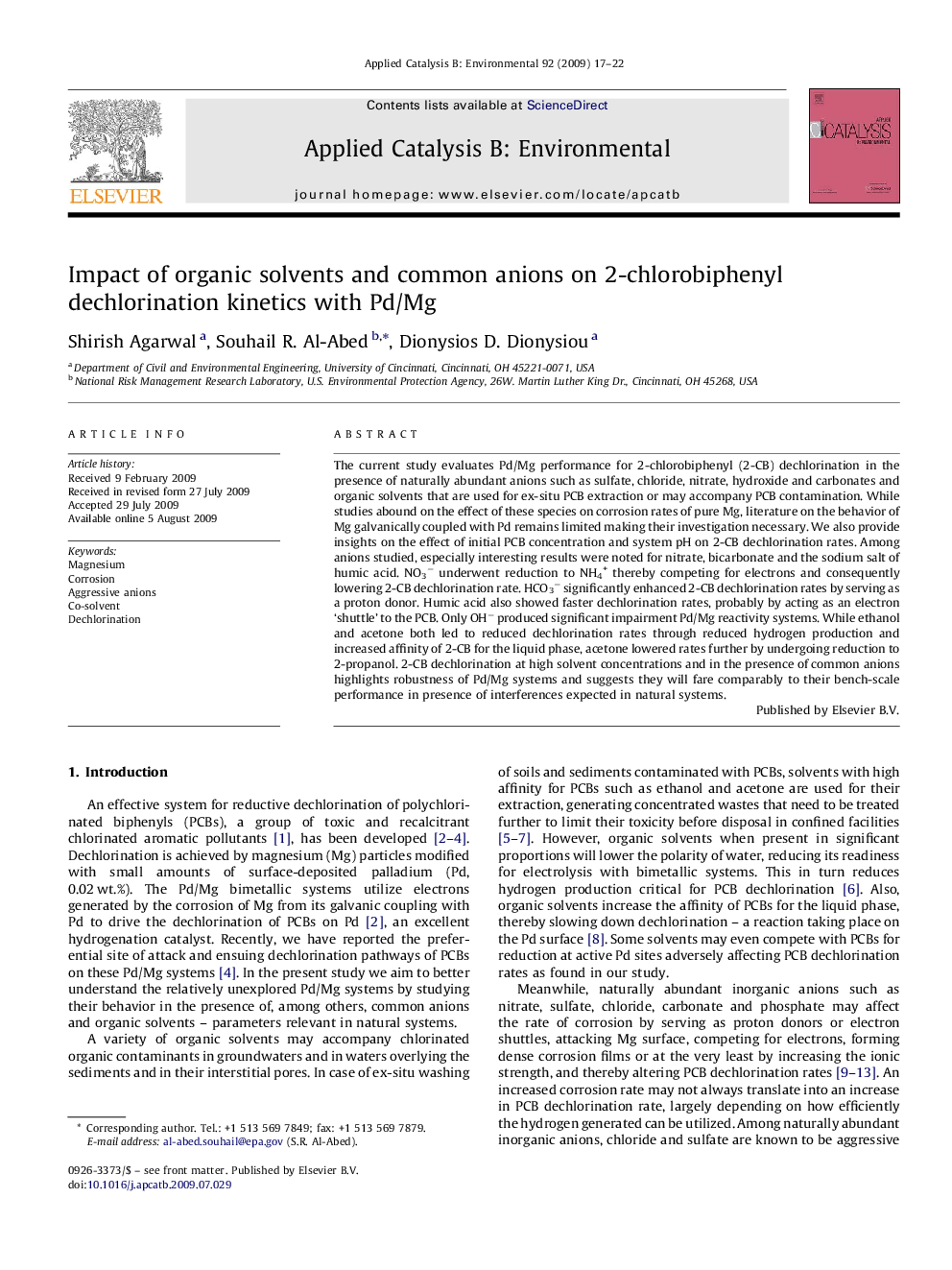| Article ID | Journal | Published Year | Pages | File Type |
|---|---|---|---|---|
| 47509 | Applied Catalysis B: Environmental | 2009 | 6 Pages |
The current study evaluates Pd/Mg performance for 2-chlorobiphenyl (2-CB) dechlorination in the presence of naturally abundant anions such as sulfate, chloride, nitrate, hydroxide and carbonates and organic solvents that are used for ex-situ PCB extraction or may accompany PCB contamination. While studies abound on the effect of these species on corrosion rates of pure Mg, literature on the behavior of Mg galvanically coupled with Pd remains limited making their investigation necessary. We also provide insights on the effect of initial PCB concentration and system pH on 2-CB dechlorination rates. Among anions studied, especially interesting results were noted for nitrate, bicarbonate and the sodium salt of humic acid. NO3− underwent reduction to NH4+ thereby competing for electrons and consequently lowering 2-CB dechlorination rate. HCO3− significantly enhanced 2-CB dechlorination rates by serving as a proton donor. Humic acid also showed faster dechlorination rates, probably by acting as an electron ‘shuttle’ to the PCB. Only OH− produced significant impairment Pd/Mg reactivity systems. While ethanol and acetone both led to reduced dechlorination rates through reduced hydrogen production and increased affinity of 2-CB for the liquid phase, acetone lowered rates further by undergoing reduction to 2-propanol. 2-CB dechlorination at high solvent concentrations and in the presence of common anions highlights robustness of Pd/Mg systems and suggests they will fare comparably to their bench-scale performance in presence of interferences expected in natural systems.
